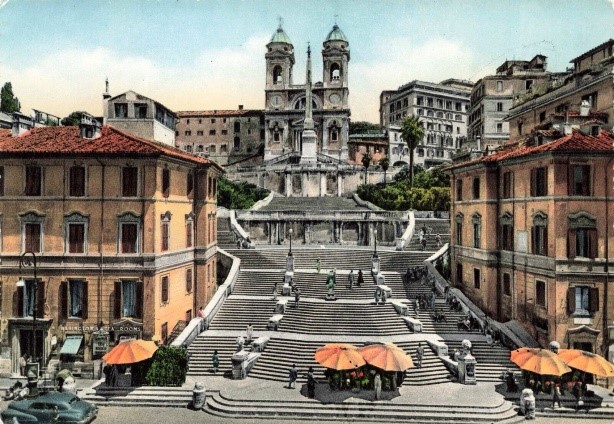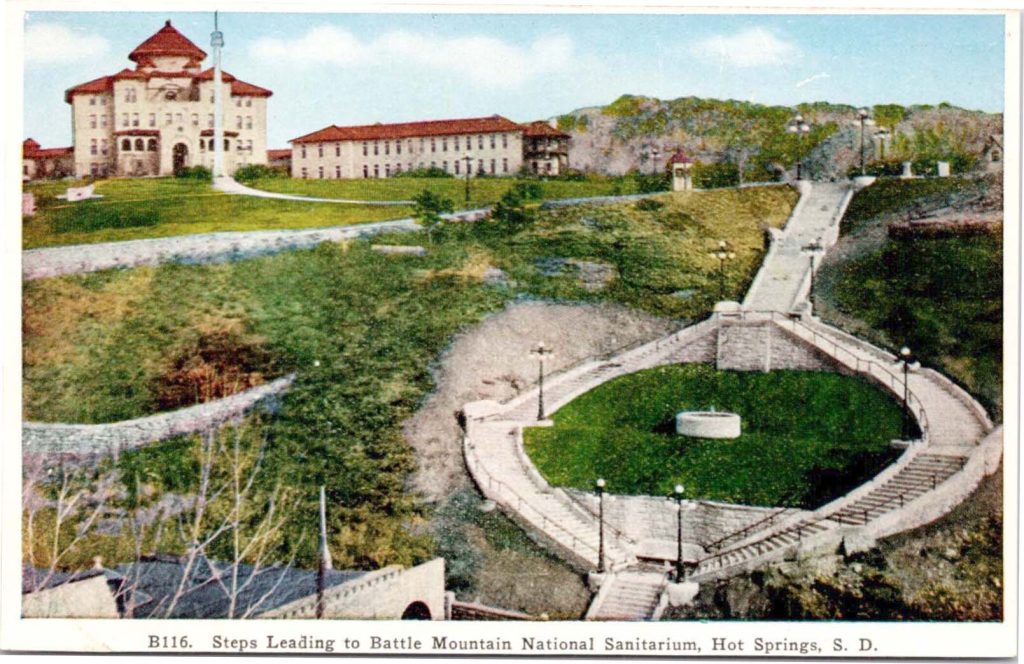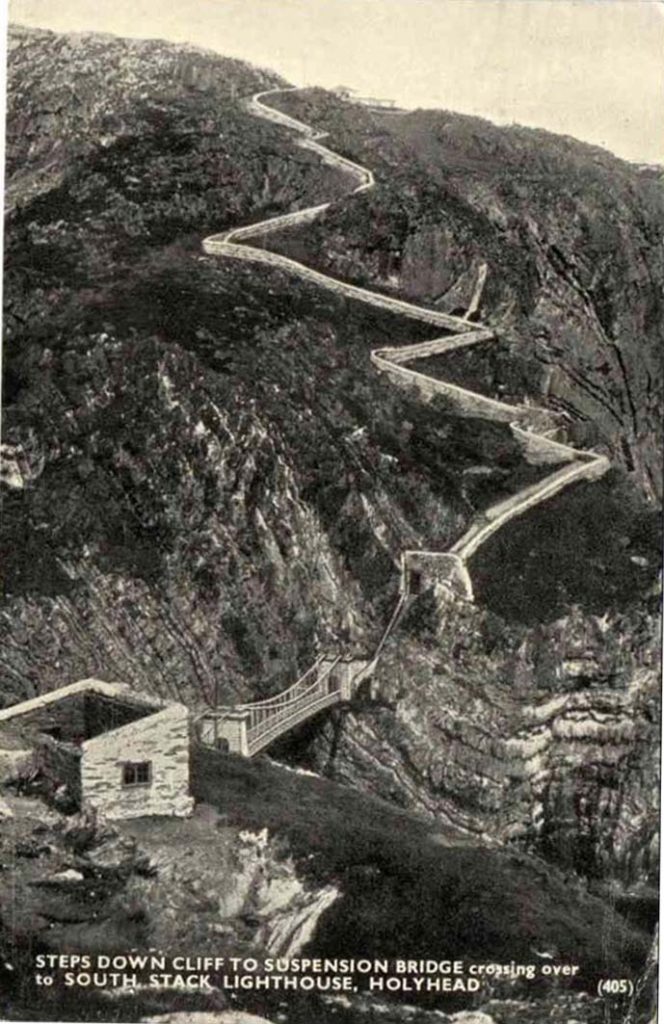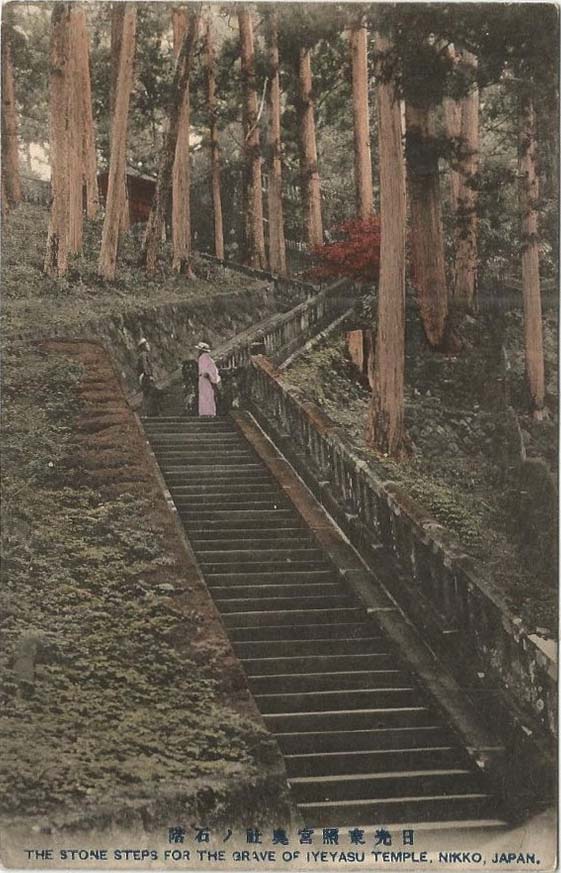Bill Burton
Great Steps in the Wide World
The funicular (whose origins are obscure) and Elisha Grave Otis’s elevator spelled the end of the need for monumental flights of steps. Before then, steps were built for getting up steep grades. Whether the goal was to arrive at a monument, a shrine, or merely to get from one level of a town or city to another, large flights of steps were necessary.
My interest in these cards was piqued by the first card below. It jumped out at me as I was hunting for cards showing graves of famous people. It startled me because the image seems like part of a skeleton. Ever since I’ve looked for postcards of unusual massive flights of steps (or stairs). Each card has its own story to tell.

The George Washington Masonic National Memorial in Alexandria, Virginia. The great obelisk we know of as the Washington Monument was begun in 1848 but not completed until 1884. Others were proposed, among them one by the Masonic Order, which began construction in 1922 but did not finish it until 1970. The memorial was meant to honor artifacts of Washington’s but also to highlight his Masonic connection and to preserve many artifacts not only related to the president but also to the order itself.

Stepping Stone Carved with Clouds and Dragons at the back of Pao Ho Tien (Hall of Preserving Harmony), Beijing, China. This flight of steps is in the outer court of the Forbidden City and its three halls, one of which is the Hall of Preserving Harmony. It was constructed during the Ming Dynasty, most likely in the early fifteenth century.

Step Pyramid, called the Pyramid of Djoser, is located in the Saqqara necropolis northwest of the ruins of Memphis, Egypt. It was likely erected in the 27th century BC during the Third Dynasty for the burial of Pharaoh Djoser. It is composed of cut stone and was, at the time of its construction, clad in white limestone.

McKinley Monument, Canton, Ohio. William McKinley, Ohio’s last American president, was assassinated in 1901. The grief at his death was widespread, with five memorials soon erected in Ohio alone and another in Chicago, Illinois. This monument, in McKinley’s hometown, was built between 1905 and 1907. There is also a postcard of a McKinley memorial, in Wilmington, Delaware, that touts his actions during the Civil War when he rose from enlisted man to major, but it’s more of a plaque.

Chkalov Stairs, Nizhny, Novgorod, Russia. Valery Pavlovich Chkalov was a Soviet pilot who died in 1938 while piloting a prototype of a Red Army fighter airplane, which crashed during its maiden test flight. He was posthumously awarded the title, “Hero of the Soviet Union” and a monument for him was built between 1943 and 1949. These stairs connect Minin and Pozharsky Square, the Upper and the Lower Volga River embankments and is the longest staircase in Russia. At the bottom of the stairs is a monument to the boat “Hero,” which is located at the lower Volga embankment.

The Spanish Steps, Rome, Italy. These steps were built between 1723 and 1726 to connect the Spanish Embassy to the Holy See in the Palazzo Monaldeschi at the bottom of the steps to the Trinità dei Monti church at the top. The steps were constructed to memorialize a period of peace between France and Spain and were initially funded by a French diplomat’s bequest. There are a mimic set of steps in the Kalorama neighborhood of Washington, DC. They are called the Decatur Terrace.

Galena High School, Galena, Illinois. Much of the city of Galena is built into a steep slope of three tiers, each with its own street. The steps connect Prospect Street (at the top, with its high school) to Washington Street (with its old firehouse) at the bottom. Unlike the famous symbolic steps shown here, these steps were constructed for the simple purpose of giving access from the lower parts of town to the high school.

Steps Leading to Battle Mountain National Sanitarium, Hot Springs, South Dakota. In the aftermath of the Civil War, the huge number of disabled veterans brought about the establishment of several veterans’ service facilities. By the 1930s there were eleven facilities across the country serving various needs, including this hospital, which was built in 1907 as a long-term, independent medical facility. It still exists today though the need for these hospitals has declined sharply in recent decades.

Steps Down Cliff to Suspension Bridge Crossing Over to South Stack Lighthouse, Holyhead. The lighthouse was built in 1809 to warn ships of the rocky shore at this outcropping of Wales. The 390 stone steps from the lighthouse lead to a footbridge that connects the island to the mainland. The steps were built about the same time as the lighthouse.

The Stone Steps For the Grave of Iyeyasu Temple, Nikko, Japan. This is the grave of the first shogun of the Tokugawa Shogunate, which ruled a unified Japan until the Meiji Restoration in 1868. Iyeyasu was the first of the three “Great Unifiers” of Japan. He died in 1616 and is buried in this temple, which was erected in 1617.
I too enjoy the majestic stairways! Fun collection, Thanks for sharing.
My father’s father’s father was playing in the band at the Temple of Music when President McKinley was assassinated at the Pan-American Exposition in Buffalo on September 6, 1901.
“Jacobs Ladder” of 700 steps on the mid-Atlantic Island of St Helena should be a “must” for this topic. There are many PCs of these steps!